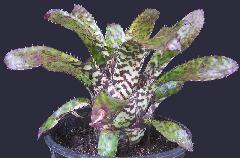
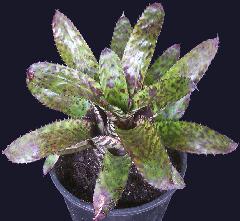
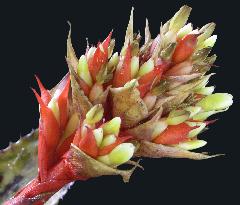
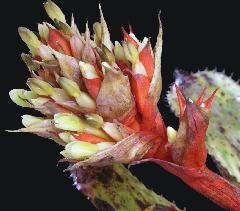
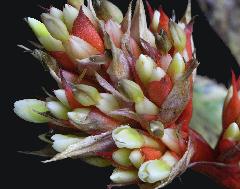
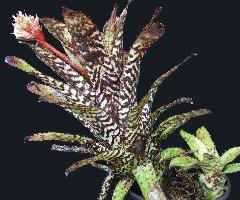
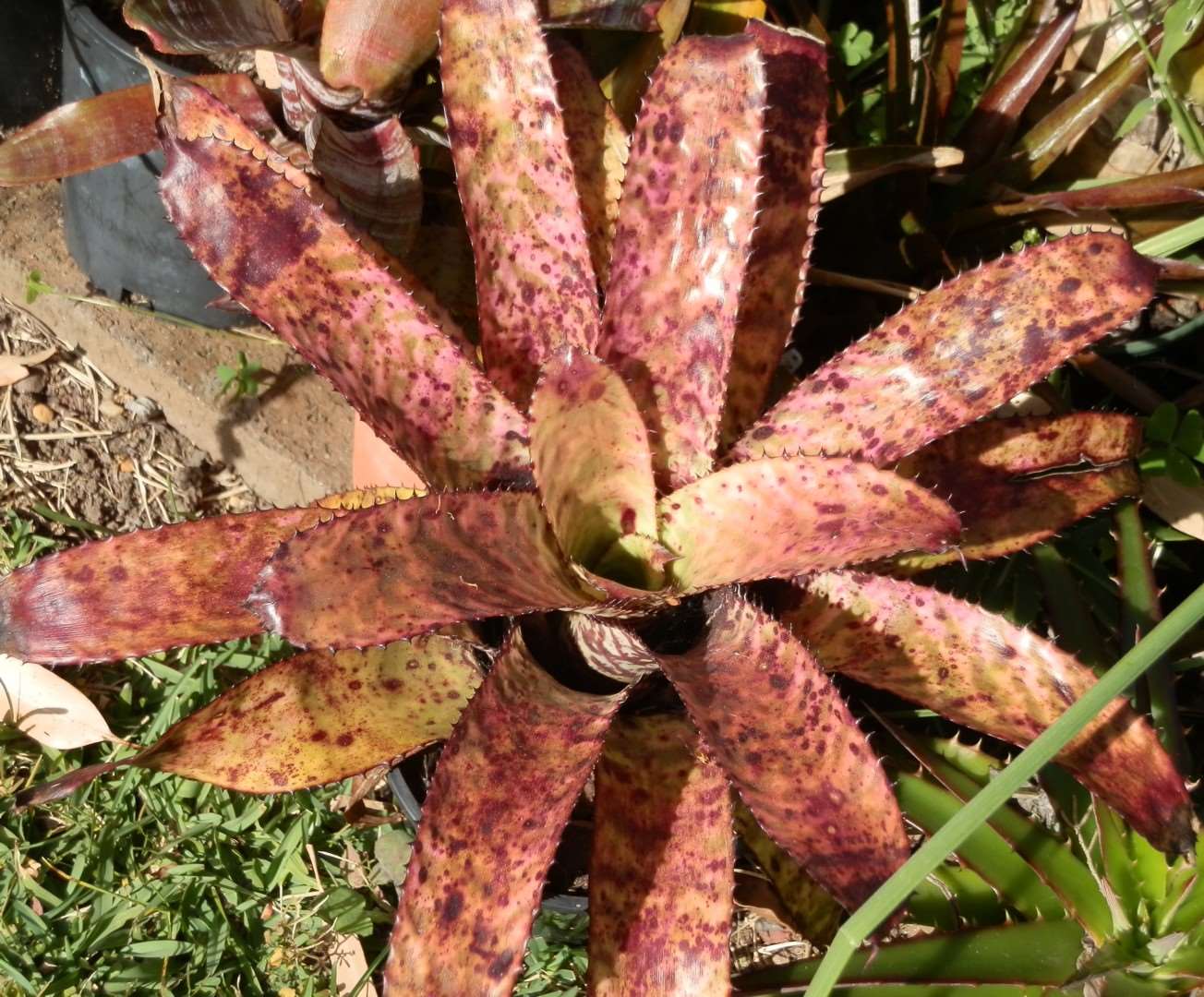
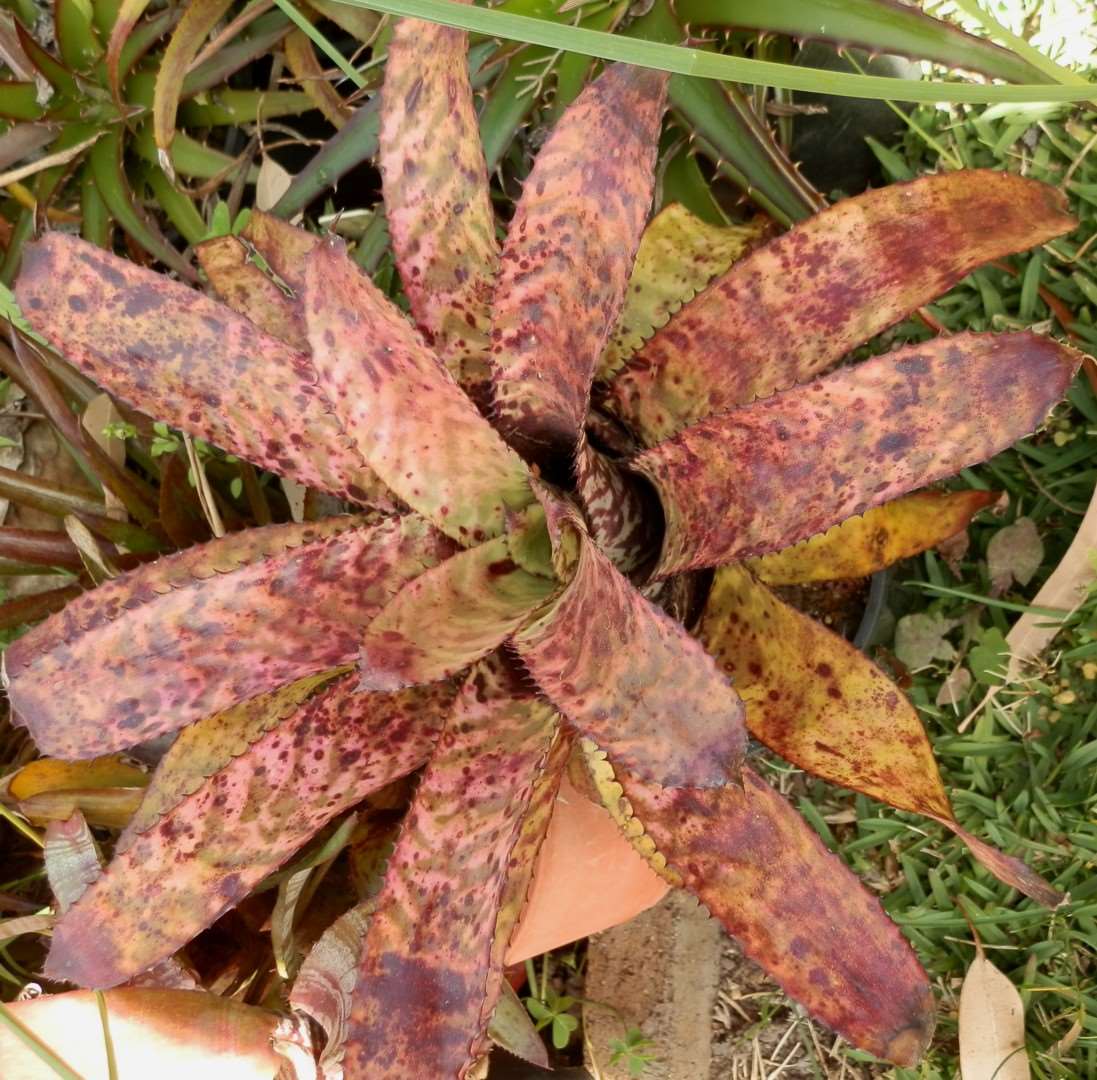
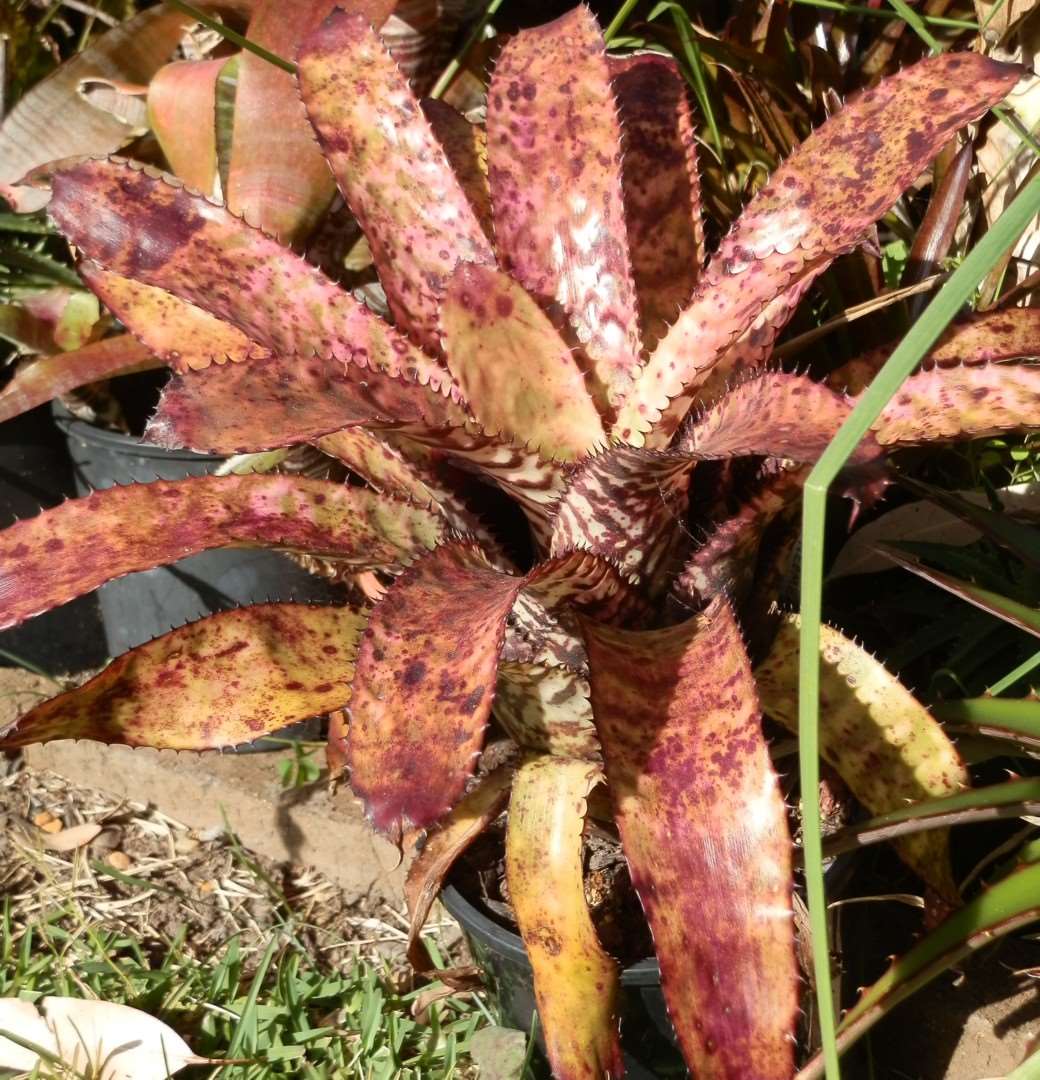
So far in this 'Special Species' series we have seen pale, dark and variegated clones of Aechmea orlandiana featured. Due to its highly ornamental nature and propensity to sometimes produce self-set seeds and hybridise naturally with other nearby clones, it was one of the most popular Aechmeas used for hybridising and seed raising in Florida back in the 1950s through to the 1970s. With many different colours, shapes and sizes in circulation, it fuelled demand with collectors for new clones. Hence there was a need for nurseries to grow lots of Aechmea orlandiana seed in search of the next great looking plant to bring to market.
Jeffrey Kent of Kent's Bromeliads in Vista, San Diego, was one such enterprising nurseryman. He has grown millions of seed over many years and is responsible for discovering and collecting a large number of species from their habitats in Central and South America. Sometime in the late 1970s Jeff grew seed from, what was most likely, Aechmea 'Pickaninny', which is a dark, smaller clone of Aechmea orlandiana. As with most batches of bromeliad seed, the grower is always on the look-out for seedlings exhibiting unusual colour or traits, thus setting them apart from the other 'ordinary' clones in cultivation. Some of the seedlings Jeff grew developed pinkish tones as they matured, with one standout eventually being named 'Rainbow' to reflect the myriad of pastel colours in the leaves.
The abaxial (under side) leaf surfaces of Aechmea 'Rainbow' are cross-banded in purple zig-zag patterns, which are not quite as dark purple-black as many other forms of Aechmea orlandiana. The adaxial (upper side) leaf surface has the same purple blotching, but they are suffused with various shades of pastel pink, olive-green and sometimes beige-gold. Most other forms tend to show only one major colour in the leaves – whereas Aechmea 'Rainbow' is like a mixture of three colours combined upon an artist's palette.
Aechmea 'Rainbow' is on the smaller size scale, compared to a number of other larger named clones, growing to only around 30cm high and 25cm wide. This is no doubt from the influence of the suspected seed parent, Aechmea 'Pickaninny' which, as the name suggests, is a smaller clone. Like all forms of Aechmea orlandiana, it should be grown in very high light (full sun if possible) to ensure the pink colour fully develops and is maintained. Without this, the leaf backgrounds can quickly turn green-yellow with the pink fading out altogether, as shown in the photos. When this happens, it looks like many other common forms of Aechmea orlandiana and is difficult to identify, so maximum light is important. As mentioned in the earlier articles of the other featured clones, it is also quite happy growing outside in Northern New Zealand, though cold damage of the lower leaves is often evident after winter. If grown outdoors, it is best positioned on or near rocks, where it can enjoy extra heat, or in trees where it receives direct sun for most of the day, all year round.